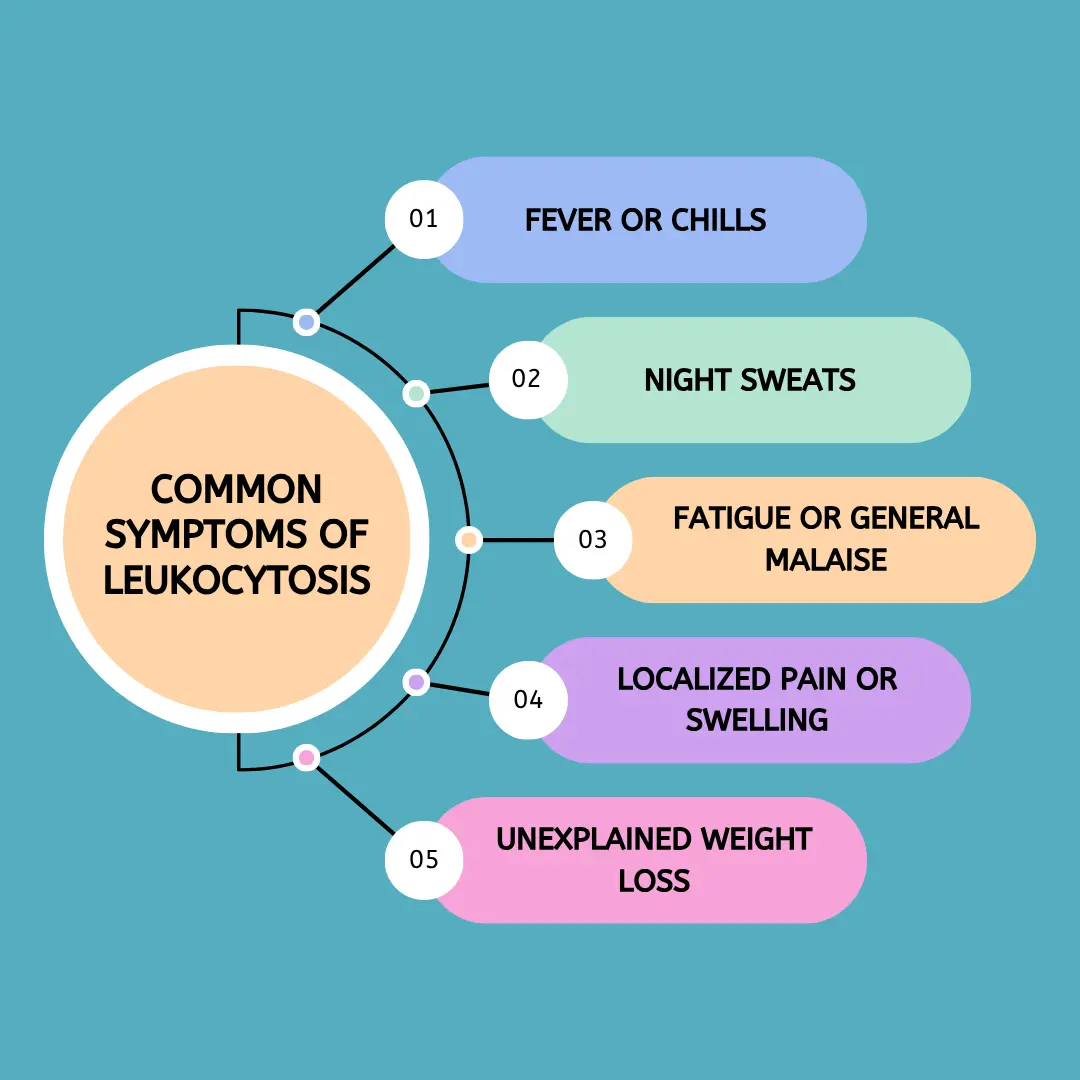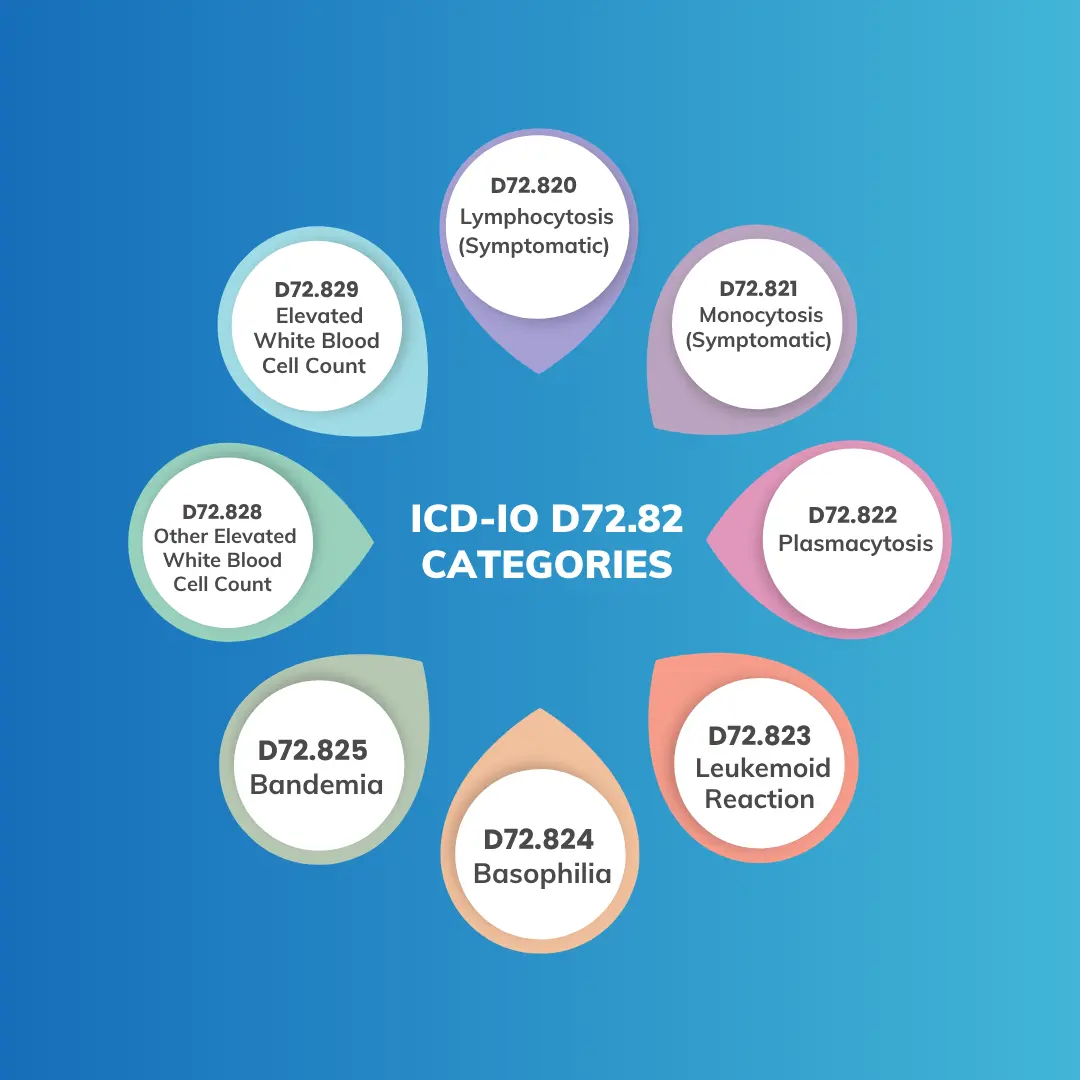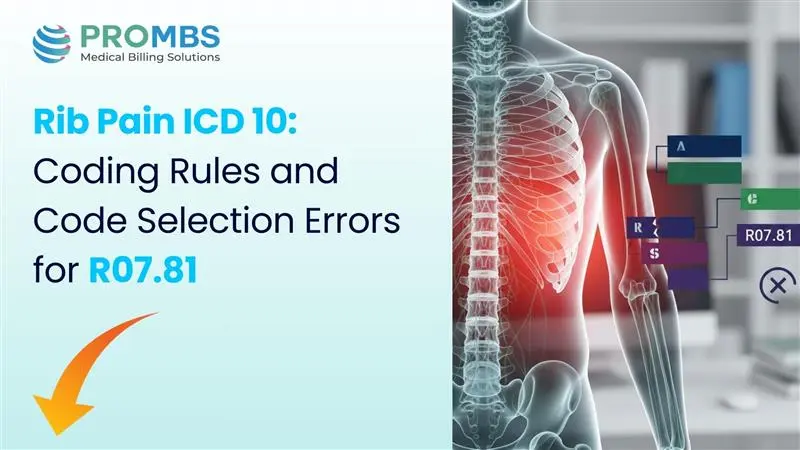What Is Leukocytosis?
Leukocytosis is a medical condition characterized by an elevated white blood cell (WBC) count in the bloodstream, typically exceeding 11,000 WBCs per microliter in adults. White blood cells are crucial components of the immune system, and an increase in their number usually indicates that the body is responding to an infection, inflammation, stress, trauma, or other underlying disorders. While it can be a normal physiological response, persistent or unexplained leukocytosis may suggest a more serious condition, such as hematologic malignancy or chronic inflammatory disease.
Common Symptoms of Leukocytosis

Persistent leukocytosis without an obvious cause warrants further diagnostic evaluation, including blood smear analysis, infection screening, and sometimes bone marrow biopsy, to rule out malignancy or chronic disease.
Understanding Leukocytosis in Clinical Practice
ICD 10 Code for Leukocytosis Breakdown: D72.829
| Component | Meaning |
|---|---|
| D | Chapter D: Diseases of the blood and blood-forming organs and immune disorders |
| 72 | Subcategory: Other disorders of white blood cells |
| .8 | Specific: Other specified white blood cell disorders |
| 29 | More specific: Elevated white blood cell count, unspecified |
It should only be used when leukocytosis is clinically significant and not explained by a more specific diagnosis. For example, if a patient has pneumonia and leukocytosis is part of that condition, the pneumonia code alone may suffice. However, if leukocytosis is documented separately as a symptom requiring monitoring or further workup, D72.829 is justified.
When to Code ICD 10 Code for Leukocytosis Separately
Clinical Documentation Tips for D72.829
To support coding ICD 10 Code for Leukocytosis (D72.829), provider documentation should include the following:
- The actual WBC value and reference range
- Clinical concern or rationale for workup
- Any provisional diagnoses being ruled out
- Whether treatment or monitoring was initiated
Payers may request documentation to verify medical necessity. If the leukocytosis prompted further diagnostic testing (e.g., blood cultures, imaging), this strengthens the justification for its use as a secondary diagnosis.
Coding Considerations and Common Errors
Common errors include upcoding leukocytosis when it is a known component of another condition or coding it without sufficient clinical evidence. Always ensure the diagnosis was assessed, addressed, or treated during the encounter.
The ICD-10 guidelines caution against assigning symptom codes, like leukocytosis, when a definitive diagnosis explains the finding. This is particularly important for hospital coding, where DRG (Diagnosis-Related Group) assignments may be influenced.
ICD-10 D72.82 Series: White Blood Cells Elevation Classifications
Discover how the D72.82 ICD-10 code family categorizes various forms of white blood cell elevation. Each code provides clinical specificity to support accurate diagnosis reporting, compliance, and data-driven decision-making in healthcare settings.

Leukocytosis (Unspecified) – ICD-10 Code D72.829
This is the most general diagnosis for elevated white blood cell (WBC) counts when the underlying cause is not clearly documented. It is commonly used in situations where further investigation is needed to determine the source of leukocytosis. For instance, if a patient’s lab results show high WBCs but no infection, malignancy, or inflammatory disease has been confirmed, D72.829 serves as a placeholder diagnosis to support monitoring and additional workup.
Neutrophilia – ICD-10 Code D72.820
Neutrophilia refers to an increased number of neutrophils, the most common type of white blood cell. This condition is often seen in bacterial infections, tissue damage (e.g., from surgery or trauma), or as a response to corticosteroid therapy. When documentation specifically identifies elevated neutrophils, coders should assign D72.820 rather than the general leukocytosis code.
Lymphocytosis – ICD-10 Code D72.828
Monocytosis – ICD-10 Code D72.821
Monocytosis is the elevation of monocytes, often associated with chronic inflammatory conditions such as tuberculosis, autoimmune disorders, or certain myelodysplastic syndromes. When the documentation specifies monocytosis, it should be coded as D72.821 to reflect the specific type of WBC elevation.
Eosinophilia – ICD-10 Code D72.1
Eosinophilia represents an elevated eosinophil count, typically seen in allergic reactions, parasitic infections, and some autoimmune diseases. It can be a sign of systemic disease such as eosinophilic esophagitis or Churg-Strauss syndrome. Code D72.1 is assigned when eosinophil elevation is clearly noted in the medical record and not attributed to a more specific diagnosis.
Basophilia – ICD-10 Code D72.822
Billing and Payer Compliance Considerations
Many commercial and Medicare payers audit claims with leukocytosis due to its frequent use as a secondary code. Coding D72.829 without clear documentation often results in claim denials. Use it only when the record shows clinical concern and the condition is managed separately.
Payers may also look for associated services like CBCs, differential counts, or infectious disease workups.
When Not to Use ICD 10 Code for Leukocytosis (D72.829)
Avoid coding leukocytosis when:
- It’s part of a broader condition already documented (e.g., appendicitis)
- It is not clinically addressed during the encounter
- It was present on admission but unrelated to the reason for visit
Use of D72.829 as a standalone diagnosis is risky without supporting labs and chart notes. Always query the provider if documentation is unclear.
How Pro-MBS Supports Accurate Leukocytosis Coding
Our medical billing and coding team specializes in navigating complex ICD-10 scenarios especially diagnostic codes like D72.829 for leukocytosis. We work closely with providers to ensure elevated white blood cell counts are not only properly documented but also accurately coded based on clinical context. Whether leukocytosis is primary, secondary to infection, or unspecified, we guide practices in selecting the correct classification to avoid miscoding and downstream denials.
Our coders and audit specialists continuously monitor payer-specific rules, documentation requirements, and code updates to support accurate, compliant claims. By partnering with Pro-MBS, you gain a team equipped to reduce recoupment risk, strengthen coding integrity, and improve first-pass claim acceptance rates, all critical for protecting your revenue and minimizing audit exposure.



